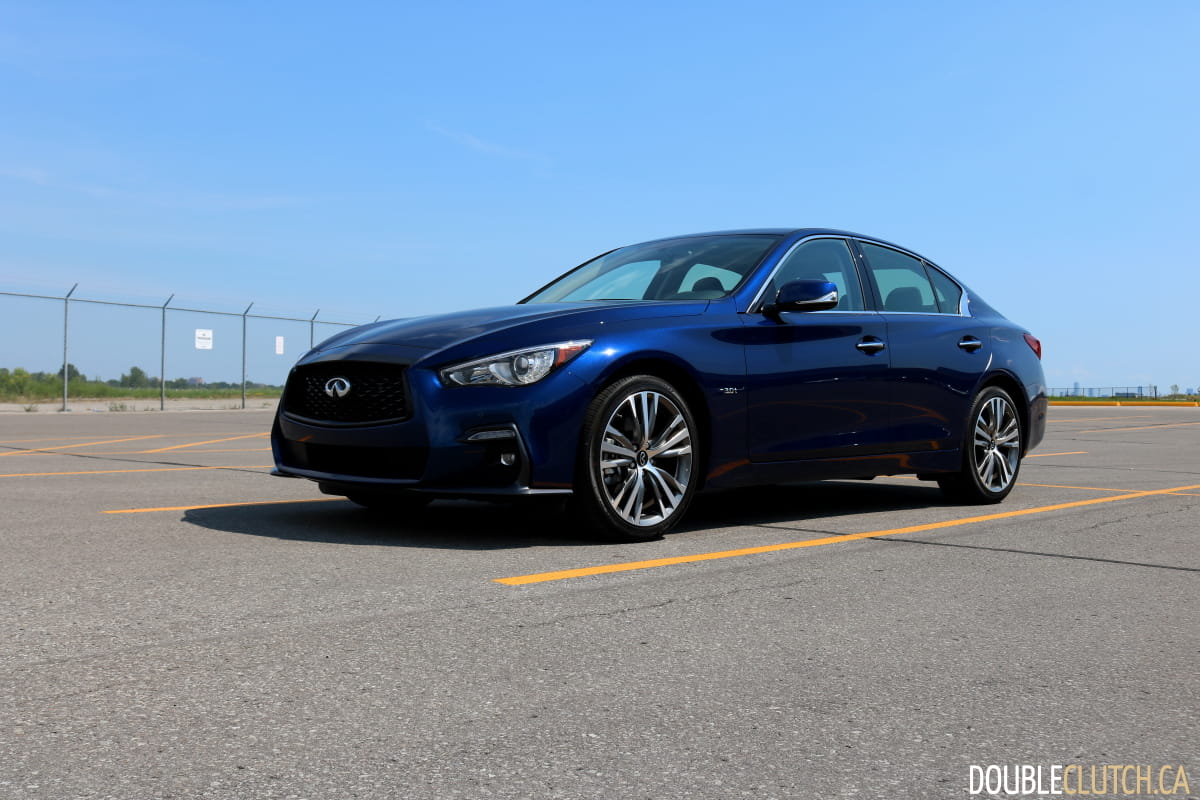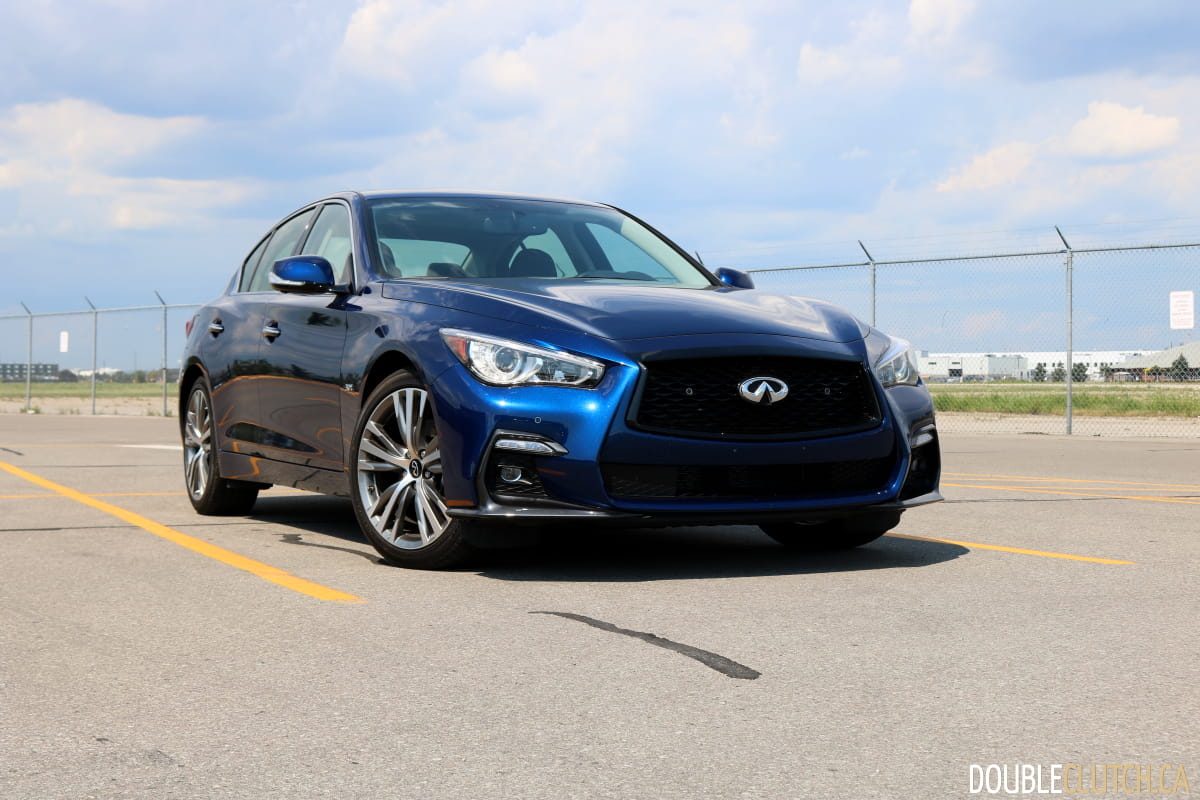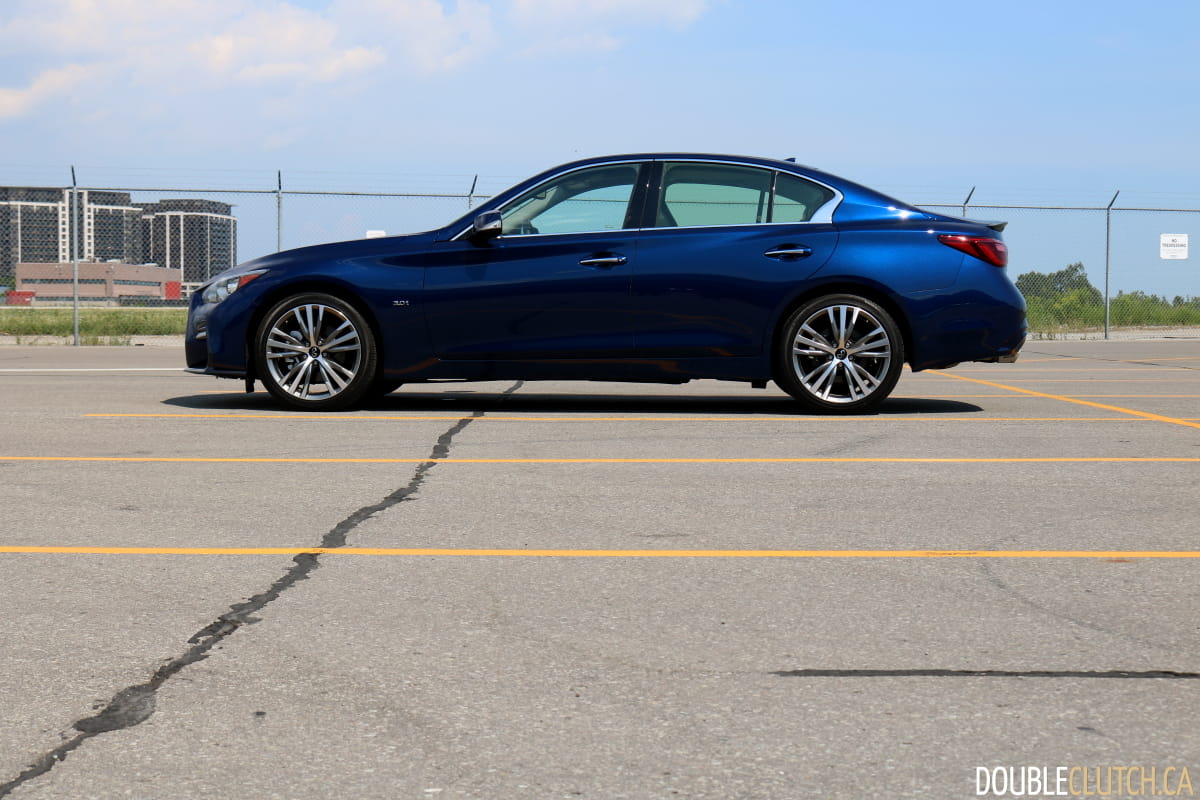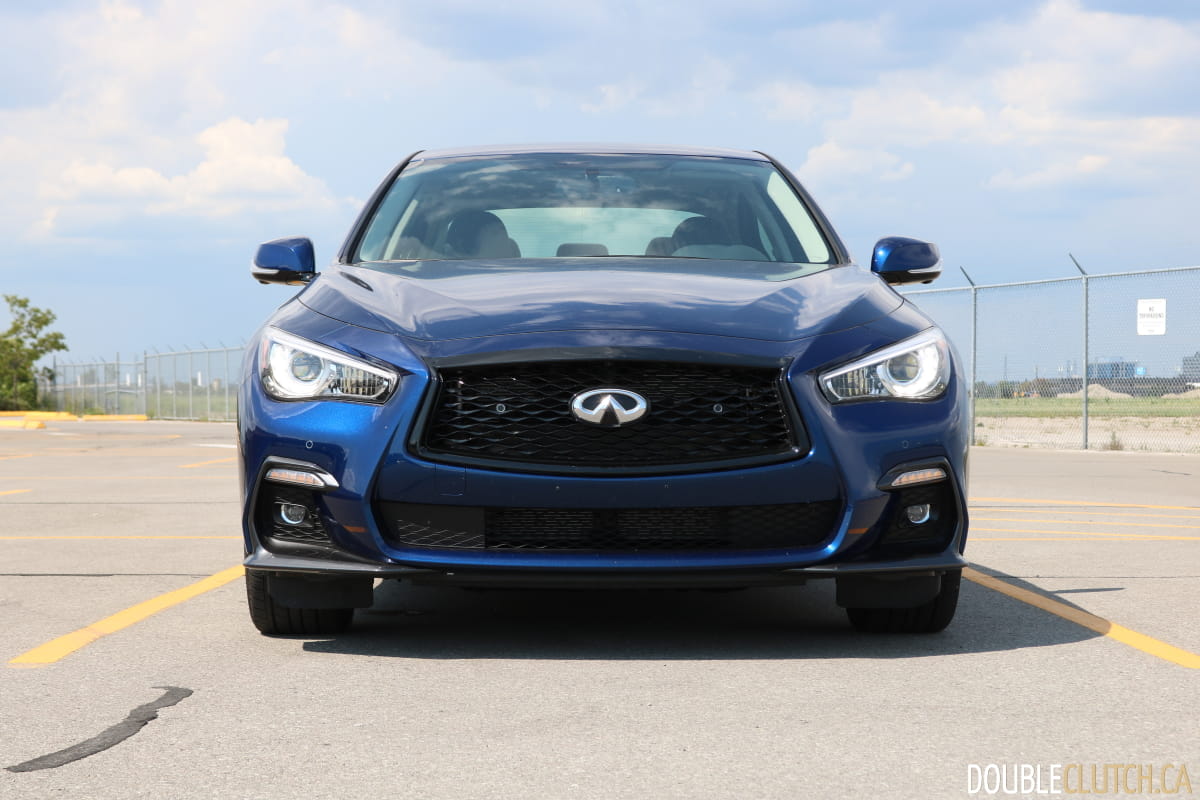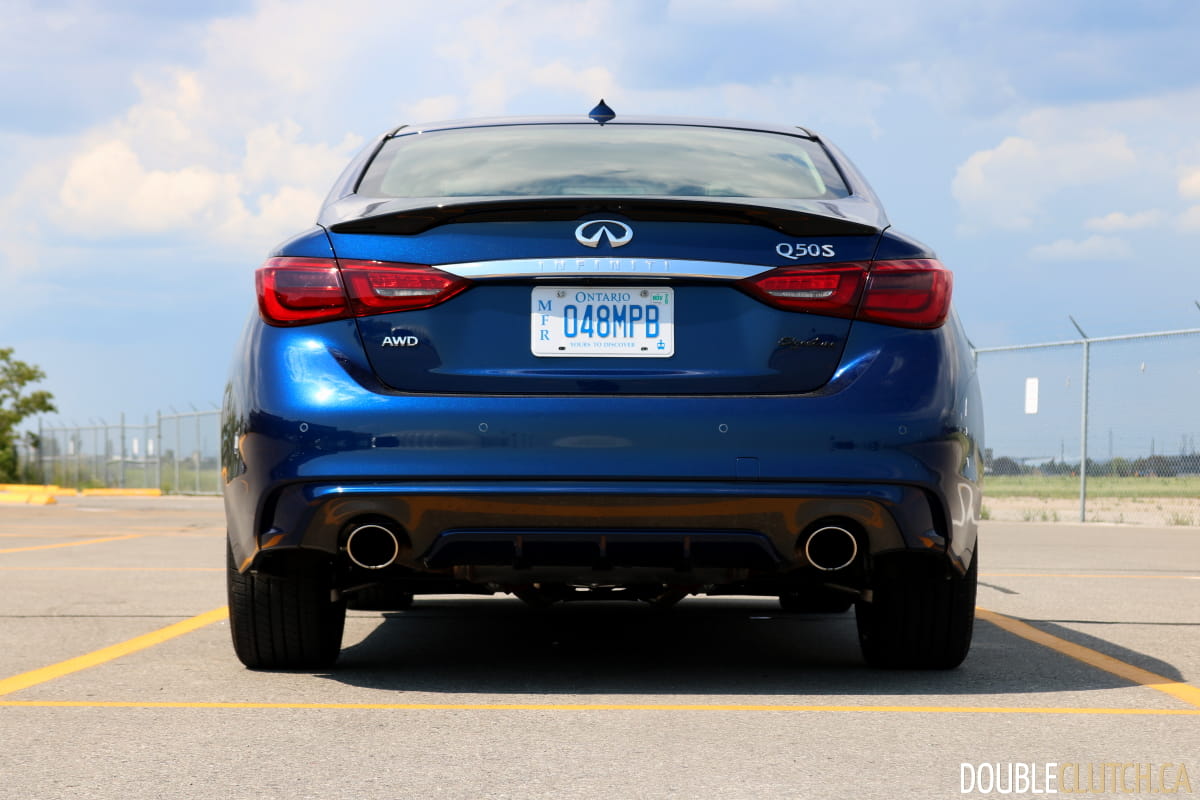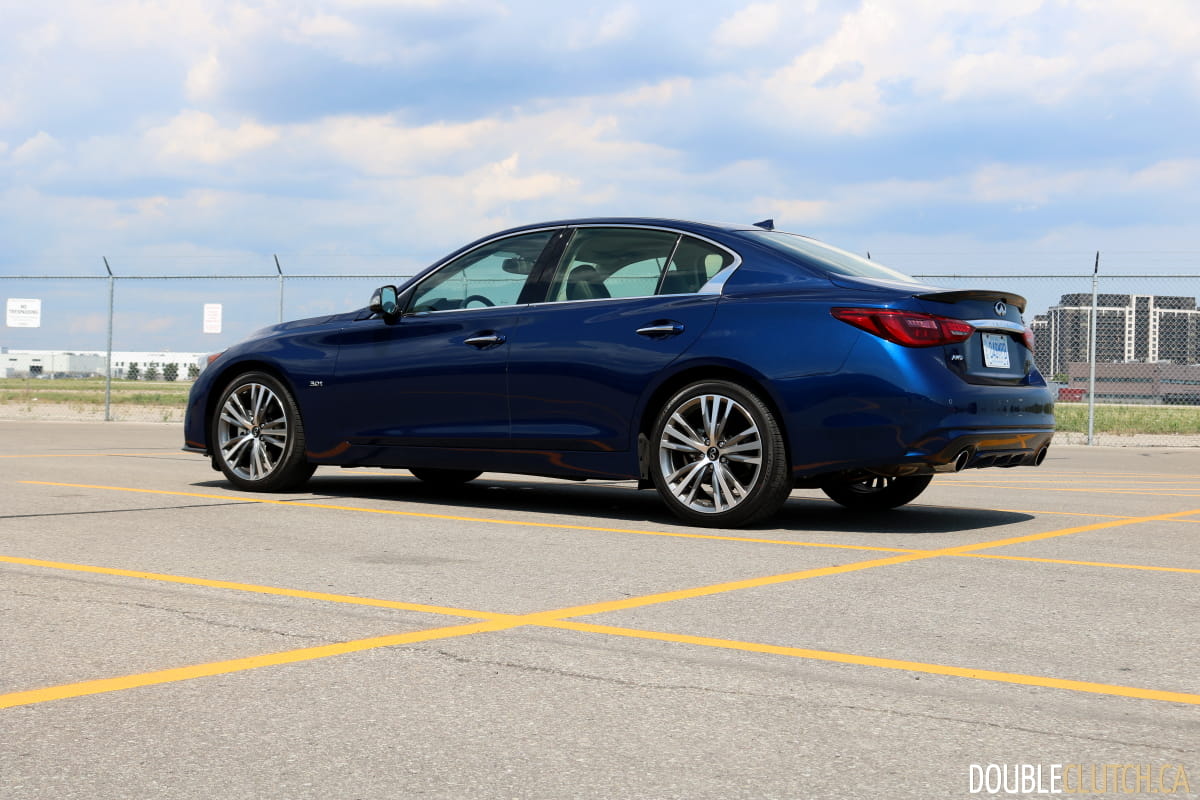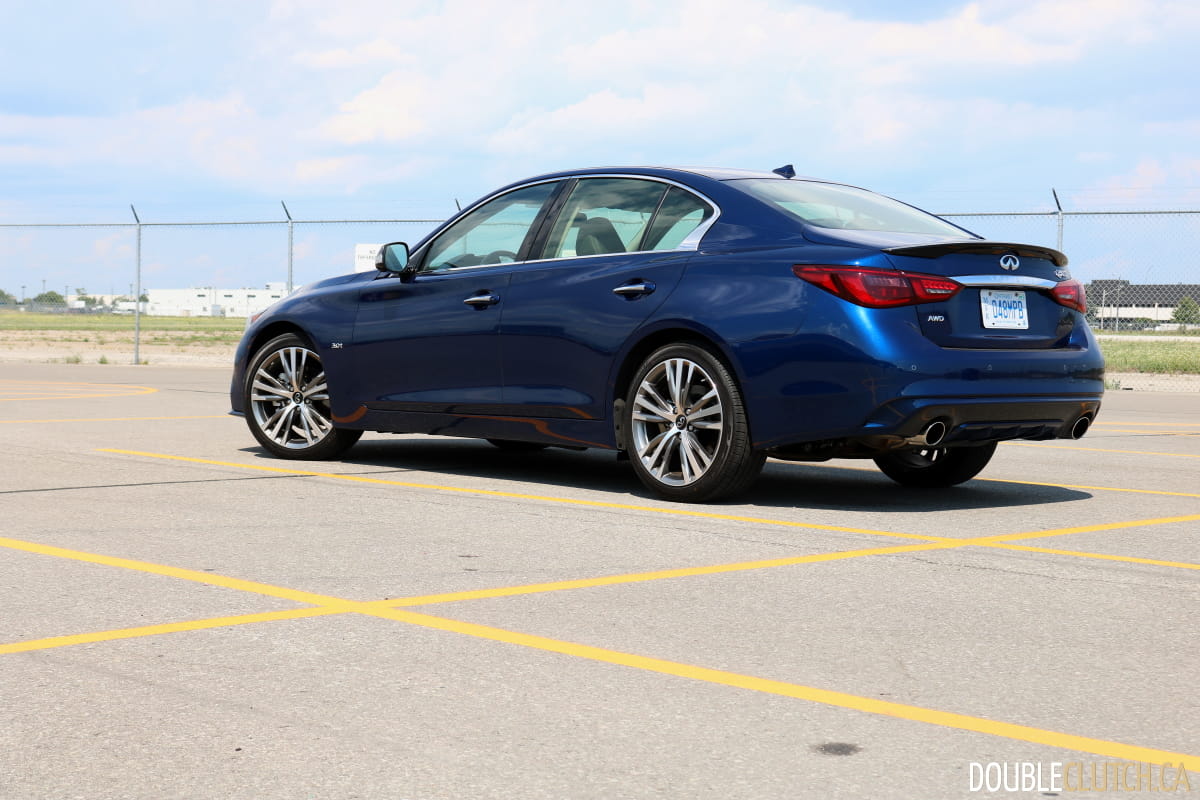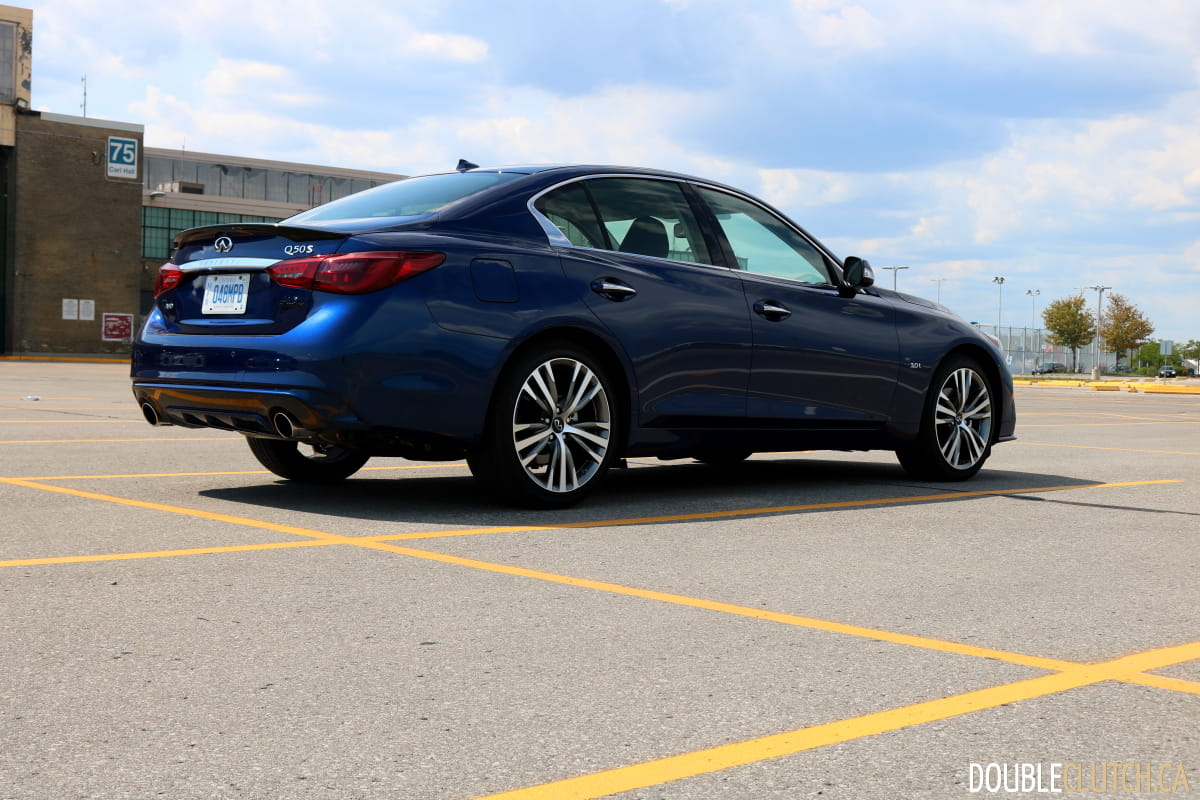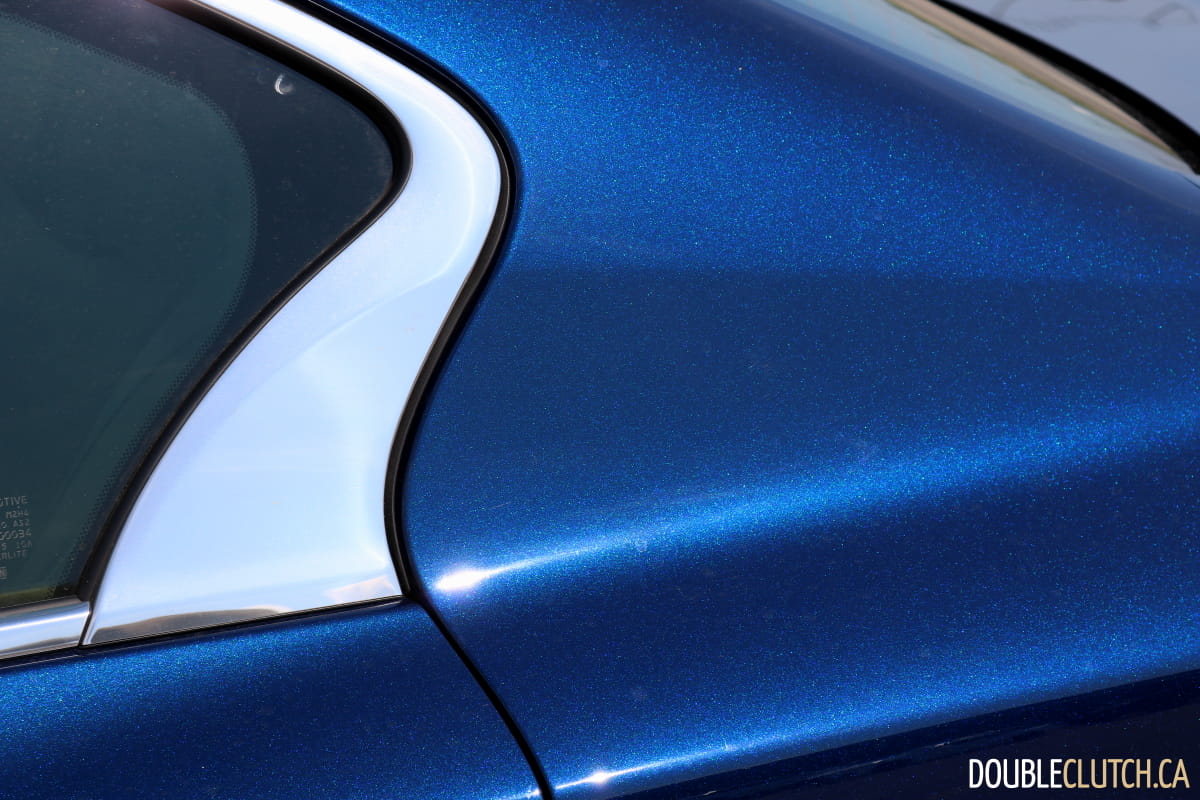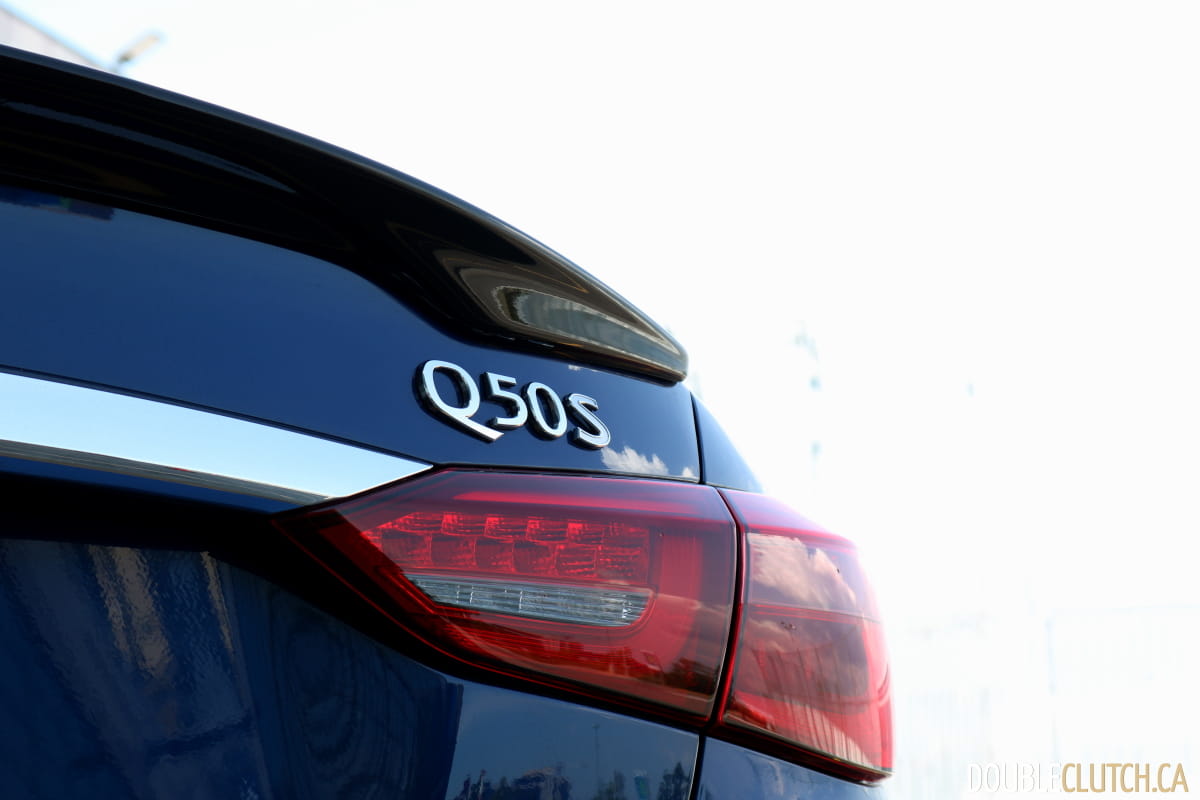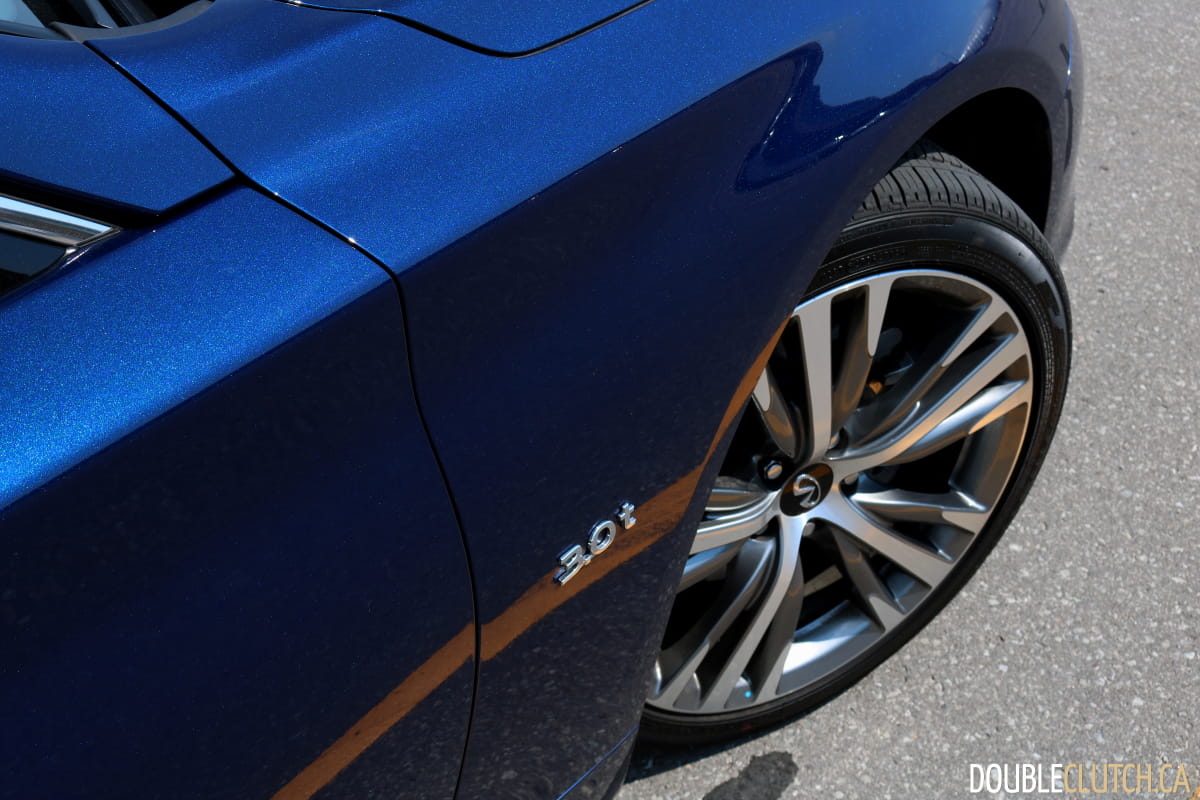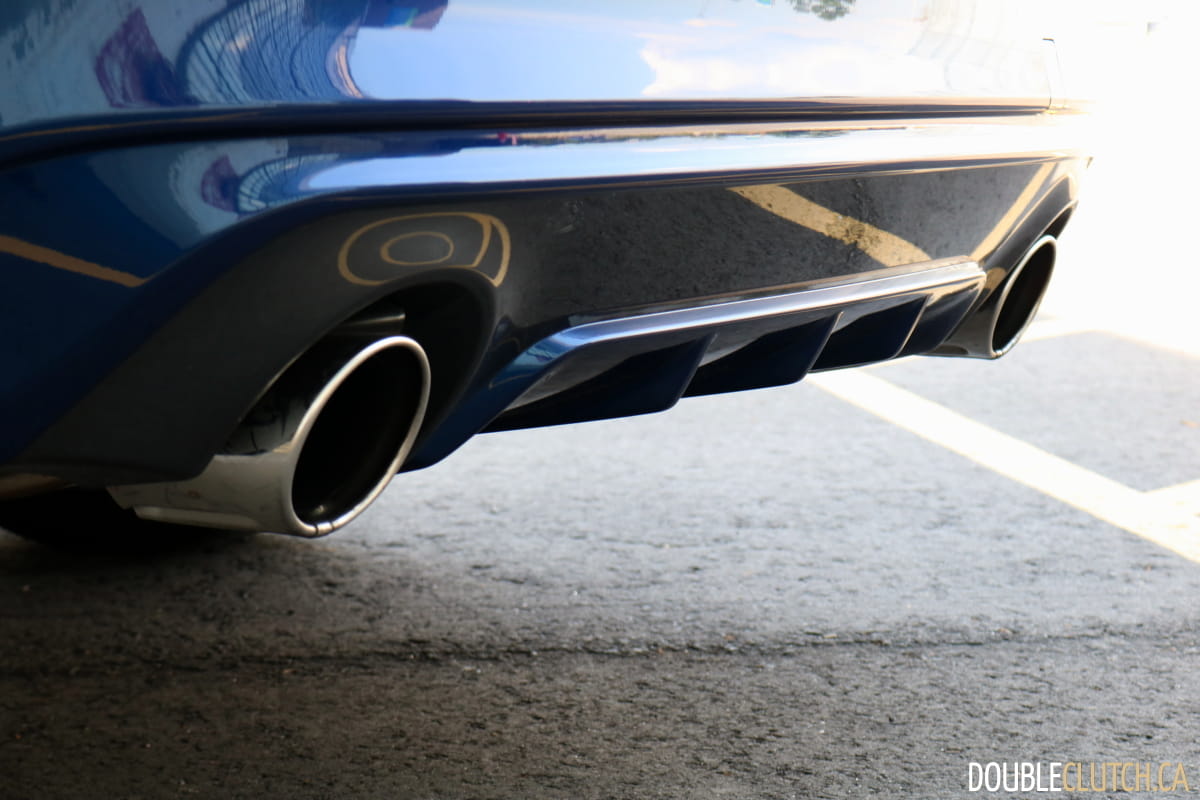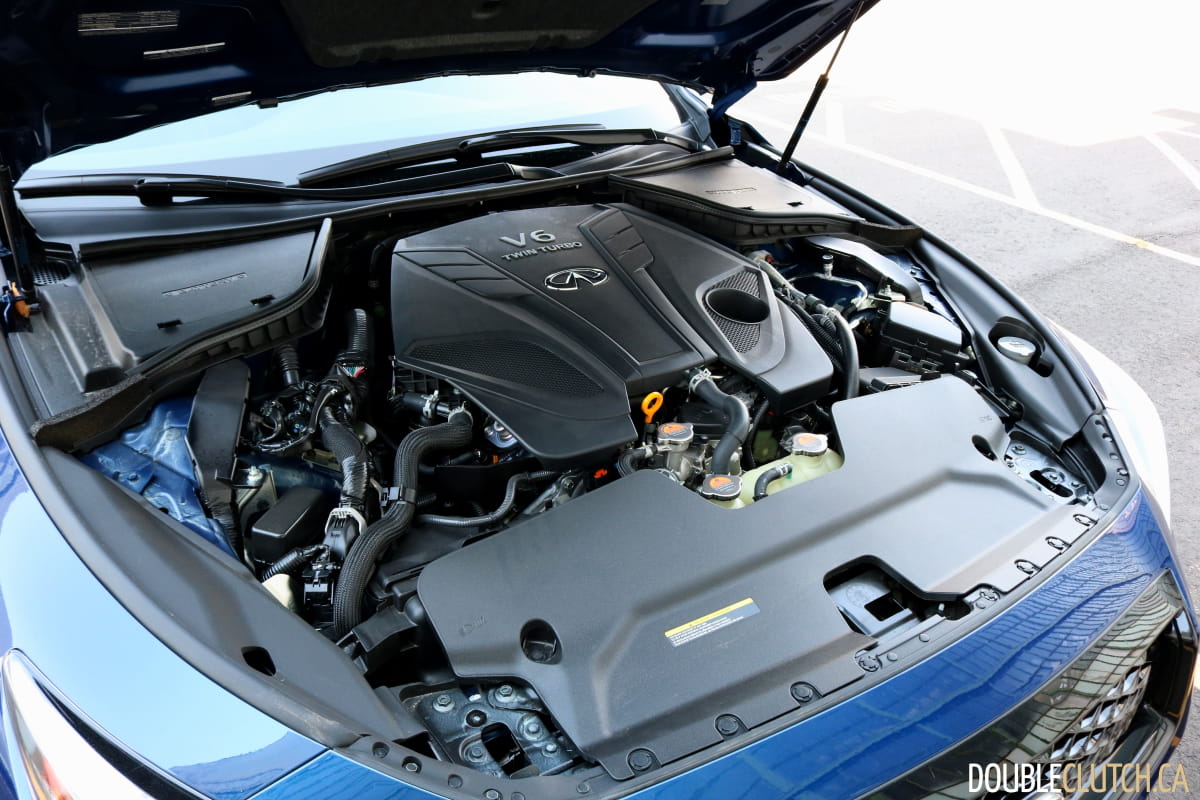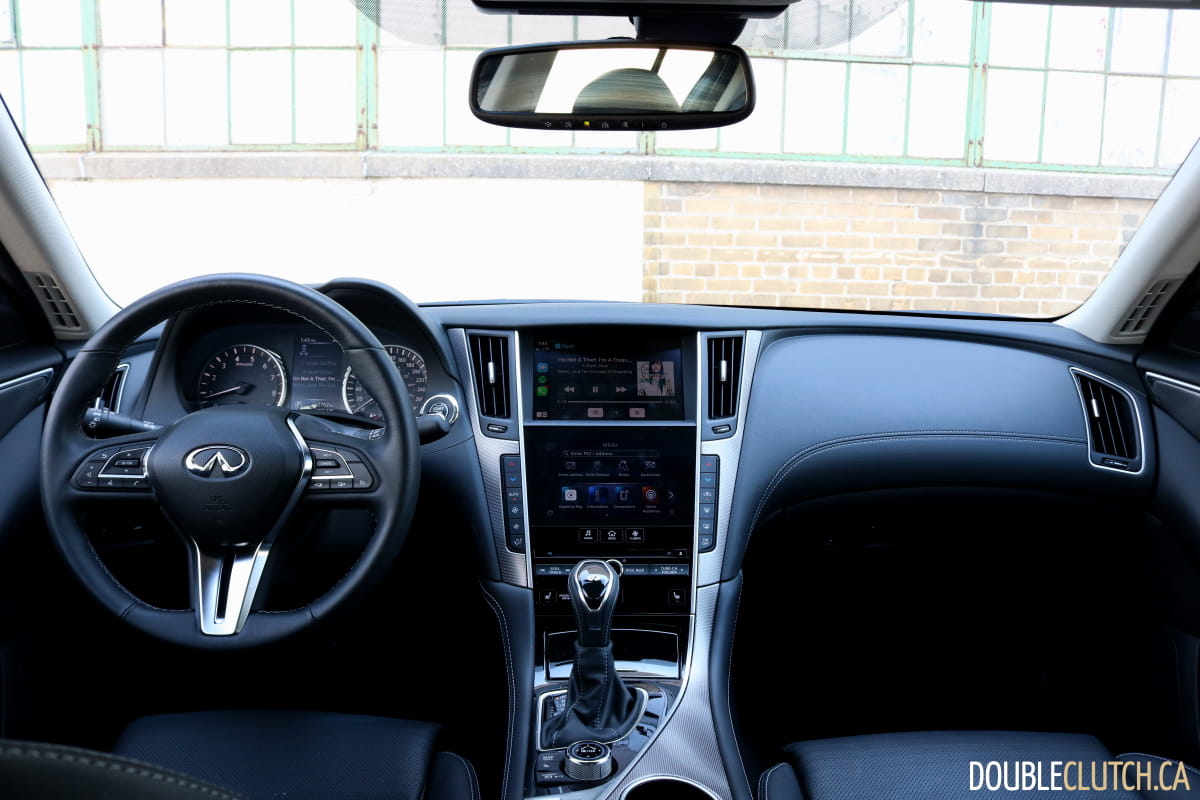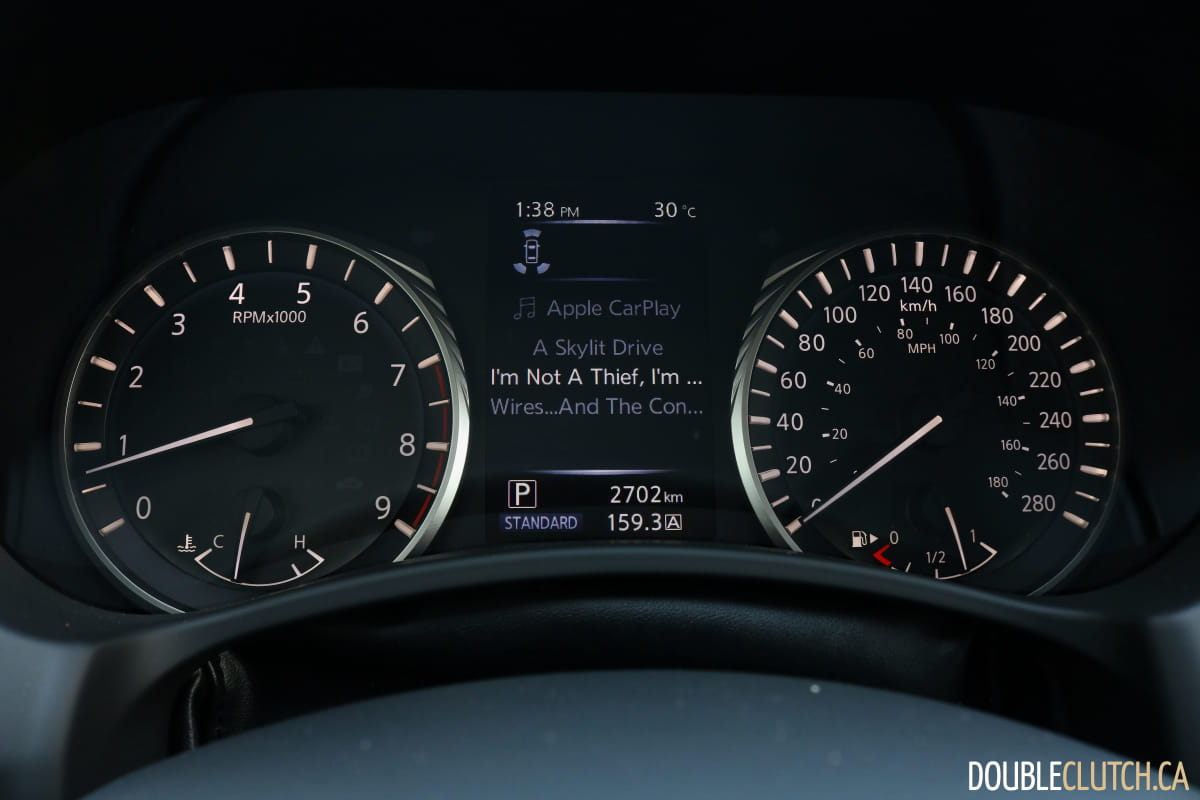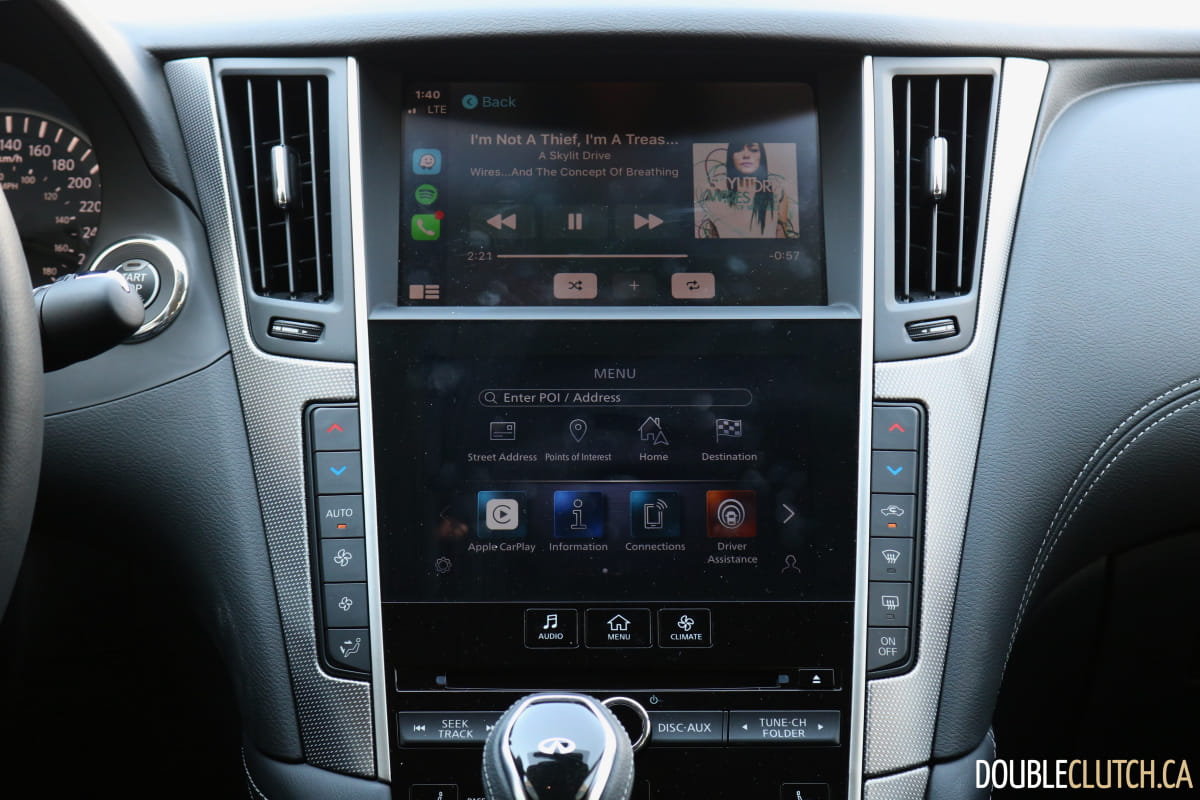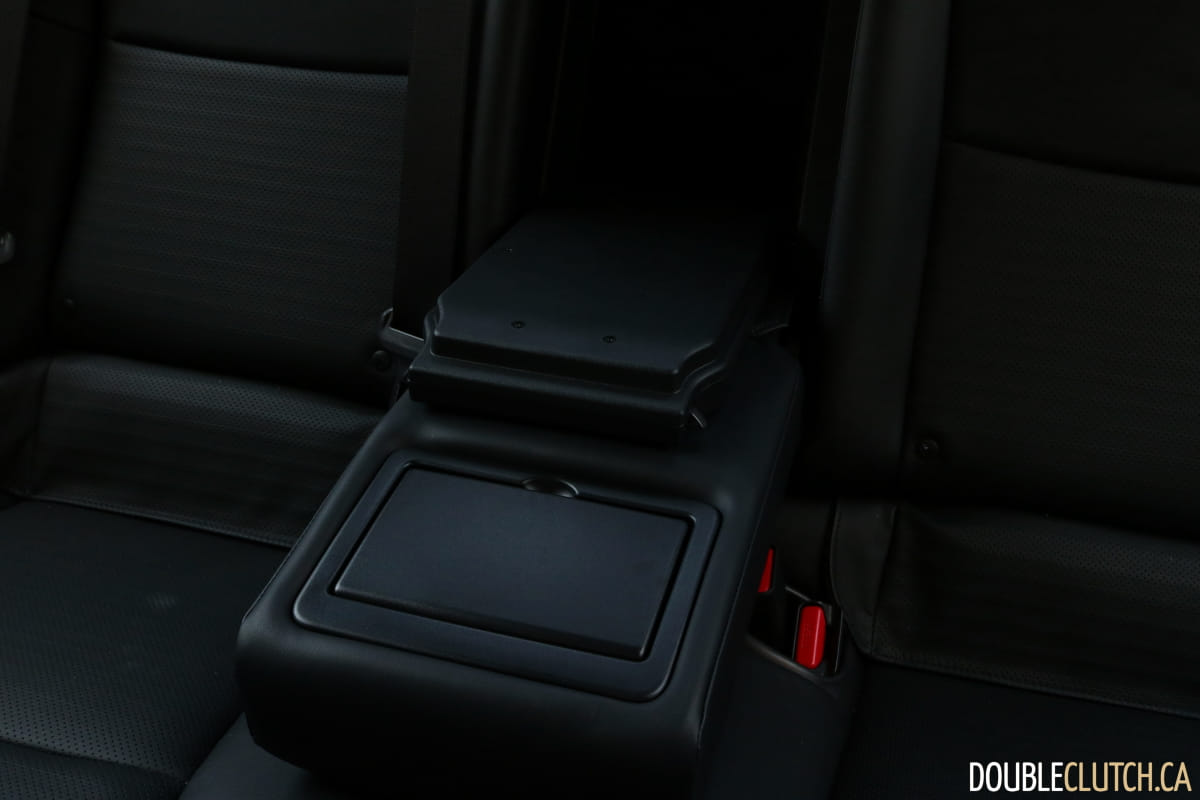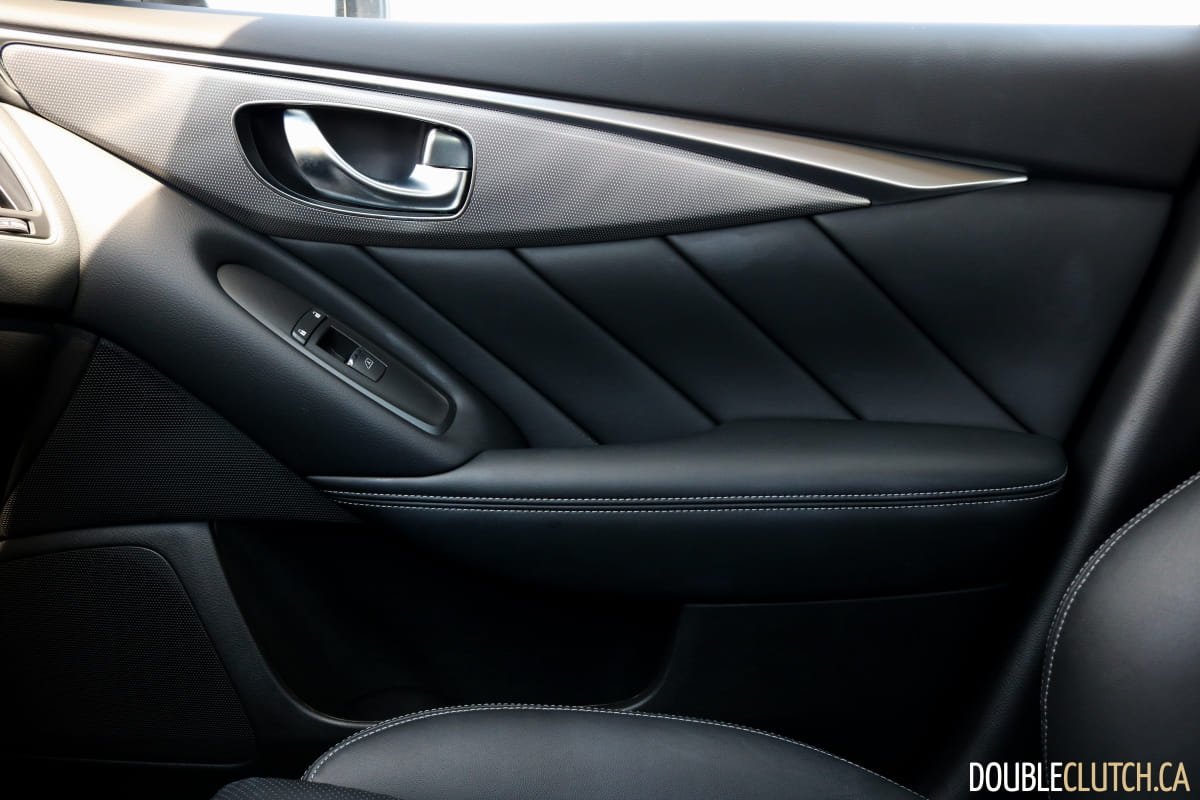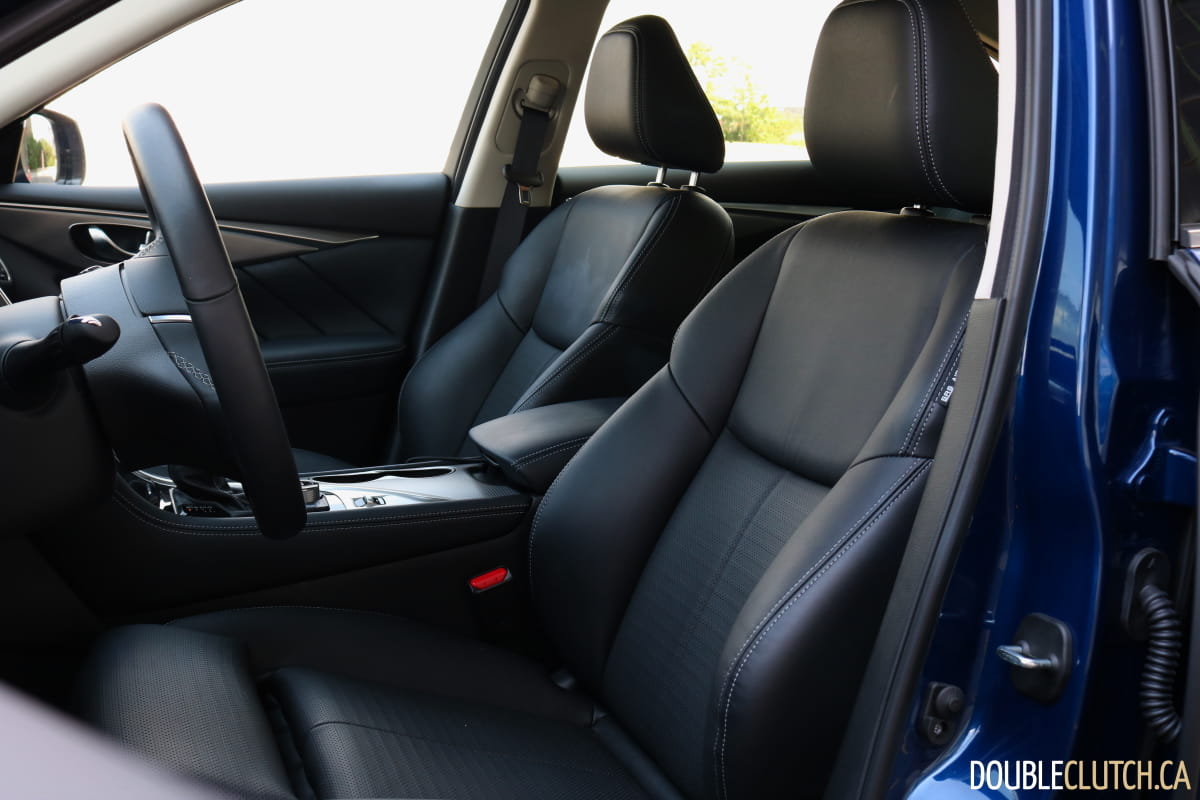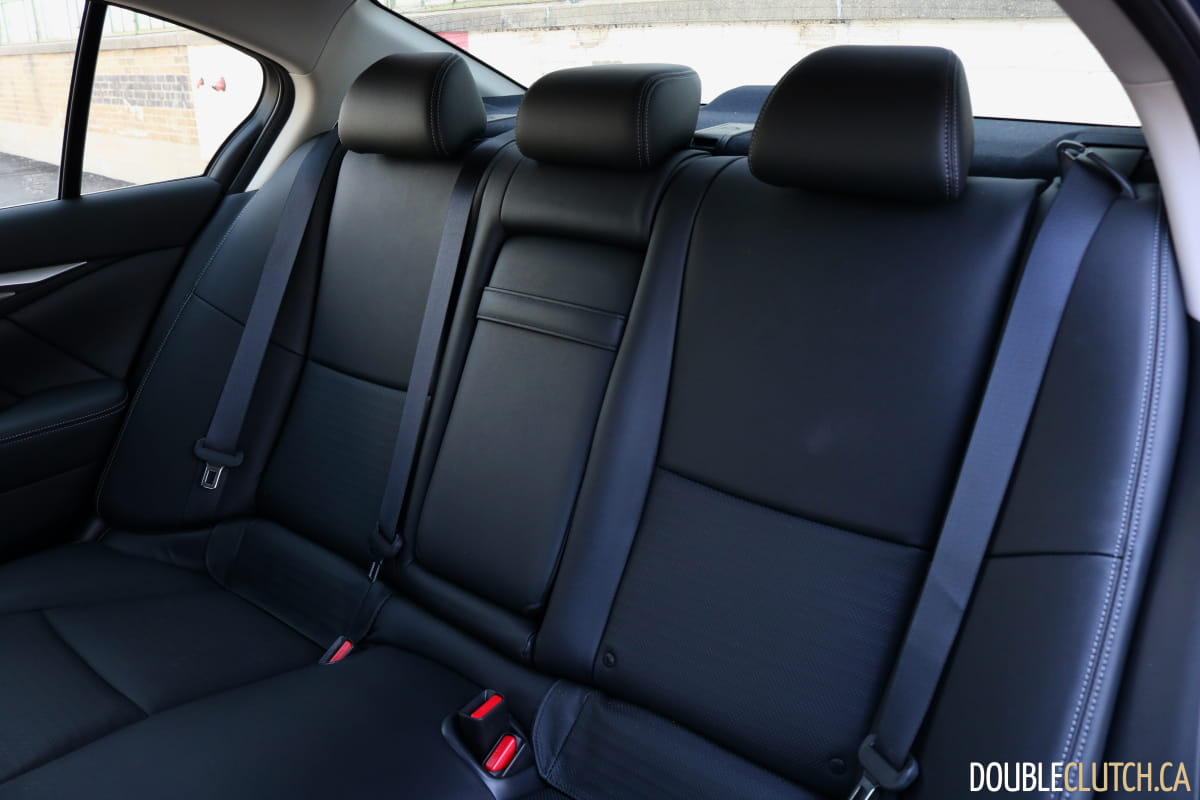It’s one of the oldest cars in its segment, debuting for 2014 and it rides on a platform that is almost 20 years old. Yet despite its age, it packs a curious amount of firepower courtesy of a three-litre twin-turbocharged V6 tailored out of the Nissan GT-R’s engine. And while many competitors have switched to bland turbocharged four-cylinders for their base engines, Infiniti’s turbocharged six-shooter is the Q50’s entry-level motor. So then, does this 2020 Infiniti Q50 Signature Edition spell doom in a borrowed suit for other base-engine entry-level luxury sedans, or is it merely the same old album with new cover art?
From the outside, there’s no denying that the Q50 is incredibly well-styled. While some competitors are chasing vulgarity with gaping single-frame grilles and overly fussy linework, the Q50 adopts a cooler, more composed look. The roofline is surprisingly sweeping for a traditional sedan and the bi-sected shoulder line is quite crisp. The low nose, thin lamps and sharp upward arc of the decklid help add visual length and width while staying quite tasteful. The 19-inch wheels on our test car fill the arches nicely while the sizable exhaust tips are both real and fantastic to look at.
Our test car came optioned in Iridium Blue, a fantastic high-metallic colour that looks mega in the sun, although it did have an unusual amount of orange peel for a new car. If there’s one visual complaint to be had, it’s that the illuminated front emblem on our test car is quite tacky. While Infiniti isn’t the worst offender, it is still sad to see them fall into the light-up badge trap. Automakers, please stop this ridiculous trend.
Since the Q50 came out for the 2014 model year, most competitors have seriously upped the game for interiors. While the shapely upholstered door inserts, dual-screen infotainment layout and available adjustable thigh support are nice touches, they don’t really cut it in a world of multicolour mood lighting, built-in fragrance dispensers and cooled seats. That being said, the inside of the Q50 is still a fairly nice place to be.
Seat comfort is quite good with decent lumbar and upper back support and cushions that are firm but not too hard. They aren’t without faults though as while the driver’s seat bolsters on this particular Q50 are adjustable, they don’t close up tightly enough to support slender drivers in the turns. The centre armrest is also fairly useless as it’s placed too far aft for even a 5’11 driver to rest their right elbow on and the compartment underneath the lid is quite shallow and fairly small. Too small, in fact, for most phones which is awkward seeing as the only USB port is located there.
It’s worth noting the Q50 has an ace up its sleeve when it comes to the interior. While the FM platform it rides on is almost twenty years old, it has a whopping 112.2 inches of wheelbase, bested only by the Cadillac CT5 and matched only by the current BMW 3-series (reviewed here). And while the 3-series has a rather long dash-to-axle ratio necessitated by its available inline-six, the Q50’s V6 means it can put that wheelbase to work with heaps of legroom. As far as space for rear passengers, this is about as good as it gets in the compact luxury sports sedan segment.
The Q50’s infotainment system has seen a massive update for 2020 with higher screen resolution and both Apple CarPlay and Android Auto. Finally, the dual-screen setup has grown its wings as this system is a lot faster, more responsive and more immersive than the previous iteration of infotainment. A minor disappointment is that this Signature Edition trim doesn’t include the available Bose audio system. The standard six-speaker system has a pleasing, balanced sound signature, but it lacks sheer wattage and staging is pretty typical for a simple stereo setup.
Powering this particular Q50 is the low-output version of Infiniti’s VR30DDTT 3.0-litre twin-turbo V6 engine, a motor that’s a chip off the block of old Godzilla, Nissan’s fire-breathing GT-R (reviewed here) junior supercar. Compared to the VQ37VHR 3.7-litre V6 powering earlier models, this 3.0t loses 28 horsepower in a faustian bargain for 26 more lb.-ft. of torque and far more power under the curve. In this trim it makes 300 horsepower at 6,400 RPM and 295 lb.-ft. of torque from 1,600 RPM to 5,200 RPM. The naught to 100 km/h dash is taken care of in a hair over five seconds and the twin-turbo V6 carries a wonderfully brash tone as it works through the rev range. While most competitors’ entry-level engines fall on their face above 5,000 RPM or so, the Q50’s V6 keeps charging on towards redline.
It’s a surprisingly potent experience that feels quicker than the numbers suggest, although it requires using manual mode to really unlock it. See, throttle response is lacking due to a combination of lazy pedal programming and an automatic transmission that predates Lady Gaga’s debut album. Mat the pedal to merge and the computers take a three-count to sort everything out in automatic mode. Annoying. Less annoying but still worth noting is the Q50’s particular thirst for fuel. Power almost always comes with an efficiency trade-off, and we saw 11.9L/100km over a week of driving, about 1.1L/100km less efficient than the government rates it for.
That being said, body control is reasonably good with a ride that is slightly firm but nowhere near harsh. While rough roads don’t produce the most hospitable ride in the world, residential area speed bumps won’t jostle caramel lattes in the cupholders and mid-corner bumps don’t really upset the chassis. It’s worth noting that this Signature Edition isn’t equipped with the steer-by-wire system available on higher trims that has a tendency to come across a bit Frank Spencer. As a result, the steering is quite fine with good weighting and just a tiny bit of feedback as the tires are leaned on in corners.
All Canadian-market Q50s feature the famed ATTESA all-wheel-drive system pioneered in the R32 Skyline GT-R back in 1989. It’s grown quicker brains and lost a limited-slip rear diff since, but it still works a treat at providing a signature rear-wheel-drive feel while keeping the back end in line. That being said, a rear-wheel-drive option would be nice to see in Canada, preferably with a limited-slip differential out back for proper driving enthusiasts well-heeled enough to afford leasing such a machine. All the parts for this are already available in Infiniti’s parts bin and the Q50’s great-grandfather has a longstanding place in the hearts of oversteer aficionados so it’s a pity having no model to continue that legacy.
If there’s one thing that could be simply and easily improved, it’s the tires. Infiniti has fitted the Q50 Signature Edition with Dunlop SP Sport 5000 DSST CTT run-flat tires which are extremely sub-par. Tire noise over less-than-perfect tarmac is entirely unacceptable for a luxury product and wet grip is on par with a five-year-old set of bargain-basement all-seasons, as evidenced by the Dunlops only achieving a B rating for wet traction in NHTSA testing. Q50 owners have also reported that the factory-fitted Dunlop tires suffer sidewall failure from minor potholes with alarming frequency, so it’s best to ditch them as soon as they wear down or fail.
To sum it all up, the 2020 Infiniti Q50 Signature Edition offers a blend of power, value and luxury, in that exact order. While it doesn’t have the tech or refinement to compete with the BMW 330i xDrive and the Mercedes-Benz C 300 4MATIC (reviewed here), the $50,695 list price for our test car pits it more against the 228i xDrive Gran Coupe and the CLA 250 4MATIC. And in a battle between youthful four-cylinder premium subcompact cars and a real-deal hot-blooded turbo V6 sports sedan, g-force beats wrinkle cream every day of the week.







